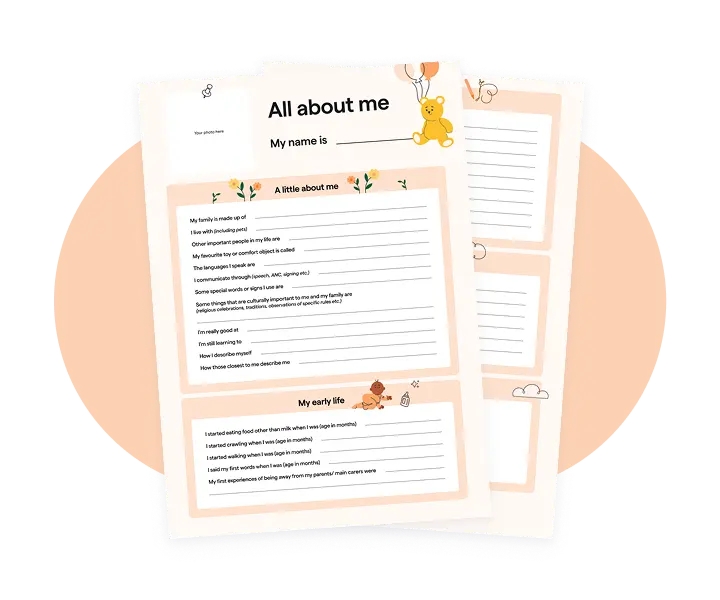settings
children
With Famly since
Have you ever been in a mixed-age setting? Most importantly, have you ever really asked why all settings don’t mix ages?
When you think about it, we don’t separate children when they’re at home. They aren’t confined to separate corners while they’re playing with lego or jabbing at paper with paintbrushes, but the minute they get to an Early Years setting, it’s farewell joint fun and hello separate rooms.
It’s common to have a group for under twos, one for two-year-olds, for over twos, and perhaps a preschool group. But mixed-settings take the opposite approach, letting children of all ages interact with one another, and letting the same practitioners care for the same children over time.
It’s high time we asked ourselves if separating children is for a good pedagogical reason, or if we’re just too used to it to question if we shouldn’t shake it up. From government ratios to making the organisation a bit easier, there are a lot of reasons why age groups are still the default. Yet if we want to place the unique child to the forefront, mixed-age settings might just be the answer we're looking for.
We’ll go into the benefits of having a mixed-age approach, and discuss why we might not be so convinced to make the change. We've got some tips to start you off if you're thinking about making the change, too!

Let’s talk about ratios
As you very well know, we have very strict national Early Years ratio requirements in the UK. For under twos, you have a 1:3 ratio, twos a 1:4 ratio, and for over twos a 1:8 ratio. That in itself isn't unusual, as ratios are present all across Europe. But we seem to be letting ratios take the wheel when it comes to organising our UK settings.
It’s a lot easier to manage a setting when you can break down the number of staff you need by the national ratios. You’ve got an easily implemented, ready-made age group plan by using those ratios, and mixing it all up might feel like a bit of a headache.
“In the UK, we have this mindset that age groups are easier,” says Kate. It does make sense from an organisational point of view, as there’s less organising, less paperwork and less of a financial burden when it comes to figuring out how many staff you need.
But here comes the big question: Are these ratios rooted in pedagogy? The neurological, psychological and emotional needs of the children aren’t put to the forefront with those ratios, as what about the three-year-old who isn’t quite ready to be thrown into a cohort of eight other children? Or the eighteen-month-old who loves playing with the four-year-olds?
Taking them out of that rich environment that suits their individual needs just because they ‘should’ be in the other group doesn’t quite make sense. It might be time to rethink why we’re using ratios to dictate age groups and rooms, and ask ourselves if we’re putting children’s needs and development to the forefront by sticking to them.
The benefits of mixed ages
If we’re looking for alternatives, mixing up the ages has incredible developmental benefits for all children involved. It’s what Kate Peach, owner of Each Peach Childcare, has been doing for thirty years. Each Peach nurseries have rooms for under twos, then family rooms for children aged between two and five, and outdoor play is a huge mix.
It's the way Kate started out in her Early Years career, and she isn’t planning on changing her approach any time soon. The benefits are too great for her to ignore. She states that having older children interact with younger ones has a huge impact on:
- Speech and language development
- Word comprehension
- Toilet training
- Behaviour
Older children act as role models for the younger children, and they take on a caring role. They give the younger children encouragement while they interact, continually chat to them, model good behaviour, and help them understand words.
And these aren’t unique findings. Mixed-age play has been shown to help children extend their zone of proximal development, as younger children are challenged to play and carry out tasks they wouldn’t be able to do alone or with others of their own age group. The older children model and extend the play in a way that younger children wouldn't be able to as they can't challenge each other the same way.
Not only that, but mixing ages also boosts younger children’s emotional development, as they form bonds with each other much like those siblings develop with one another. Older children are a source of comfort, nurture and care towards the younger ones.
Putting the unique child first
It’s a lot more than just letting the children learn from each other, however. Kate’s seen firsthand how letting children mingle with other ages as they develop puts the unique child and their needs first.
“Under fives develop at completely different paces, but we keep putting them into small boxes based on their ages,” she says. This brings up the huge question of child development and what it’s ‘supposed’ to look like.
No two children will develop at exactly the same rate, so why do we expect them to automatically thrive in defined age groups? Where one child might be chatting animatedly at one, another might struggle to even say a few words. Does placing the child struggling to talk in the ‘older group only’ make sense if they’re not quite ready yet? As a practitioner, you’ll know when a child should be challenged, have their learning extended and what environment is best for them, but sometimes age groups get in the way of that.
If we take those age boxes away, we can help children thrive in the environment they need, not the environment they’re ‘supposed’ to thrive in.
The big ideas
A glance at age groups
We’ve looked at why age groups aren’t necessarily embedded in pedagogy, but are they really easier to handle? Kate gave age groups a go when her staff were extremely keen to try it, and she wasn’t convinced at the result.
“We had three preschool boys who were in need of a little extra behavioural support. They were physically robust, and were quite rough with one another. Staff really struggled to have all three of these boys in the same preschool room,” says Kate.
This is one small example of where age groups may be falling short. Managing difficult behaviour becomes a really tricky task, as well as giving children the extra support they need. If these boys were spread into other rooms with children of different ages, they might have behaved quite differently, and staff might have been able to manage the behaviour a lot more easily.

The first steps to think about
If you’re thinking you might like to move away from age groups, the key is to take it one step at a time. Every setting is different, as well as all staff and all children. In Kate’s experience, making a huge foundational change one day the next to the next would be a huge shock to practitioners.
She recommends taking it one step at a time:
- Assess whether mixing ages is even possible before you start. “The shape, size and layout of a nursery plays a huge role in whether you can start mixing the age groups,” says Kate. If you have a labyrinthine setting on multiple floors, it might not be physically possible.
- Focus on your setting’s pedagogy and ensure all members of staff are on the same page on care, pedagogy and ethos. “The first step before making any changes is to assess what they’re teaching, what they’re doing at the unique care needs of the children in the setting,” says Kate. That comes before making any central change, as you should know the ins and outs of your setting’s pedagogy before you even think about changing.
- Have practitioners visit a mixed-age setting. Whenever Kate helps a setting transition into mixing ages, she gives practitioners insight into what mixing ages looks like, how practitioners handle it and how everything works in practice.
- Talk to the parents. When Kate introduced set age groups in her setting for the first (and only) time in her career, it was heavily influenced by the parents. Parents wanted to make sure their children were ‘prepared’ for school and voiced this regularly to staff.
- Remember everything doesn’t have to be mixed ages. If you want to create areas to specifically target the preschoolers with an advanced task, then of course you should! There’s no reason you can’t create temporary age zones, especially if you’re targeting a skill or extending an area of learning the younger ones couldn’t cope with.
Try learning journals for free
Add observations, and build digital learning journals to share with families instantly. All with your completely free 14-day trial.
Get started









